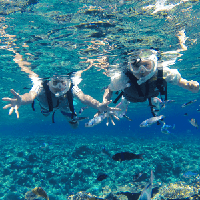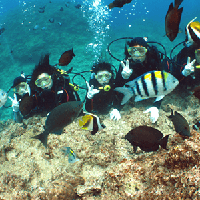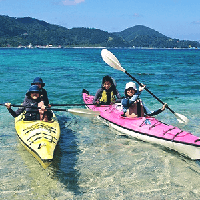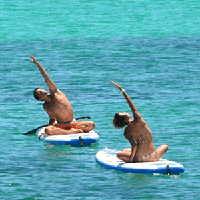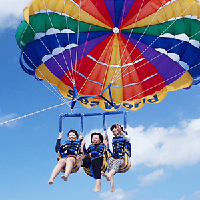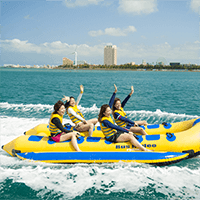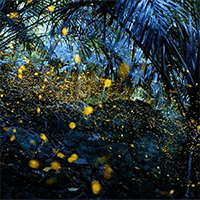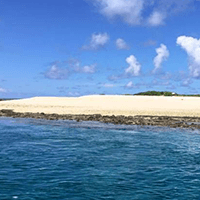- Age 6~Age 99
- 1~2 hours
- 13:00
When most people think of Takarazuka, they think of the Takarazuka Revue, but surprisingly, there are not only operas, but also hot springs, memorial halls, and other attractions around Takarazuka Station. After the performance in Takarazuka, why don't you take a walk around the city from a different side with a tour guide? There will surely be new discoveries! ~Time schedule~ 13:00 [Meet in front of the Hankyu Takarazuka station ticket gate] The tour starts here! Although the road is flat, you will walk about 2 kilometers, so please wear comfortable shoes on the day. 13:10 [Birthplace of Carbonated Rice Crackers and Wilkinson Vending Machine] The popular carbonated water "Wilkinson Tansan" when drinking a highball. Did you know that this "Wilkinson Tansan" originated in Takarazuka? In front of Takarazuka Onsen, there is an all-Wilkinson vending machine only here in Japan. 13:20 [Takarazuka Onsen Hotel Wakamizu] During the Showa era, Takarazuka Family Land and hot springs were located along the Muko River, and it was a prosperous resort. There are only a few hotels in operation now, but the atmosphere of the hot spring town of yesteryear still lingers in the air. 13:40 [Takarazuka Ohashi] After passing Takarazuka Onsen, a large tower apartment is currently under construction on the site where the "Takarazuka Hotel", which was founded in 1923, used to be. Please take a look at the town of Takarazuka, which has been renewed with the changing times. The view from Takarazuka Bridge is a great photo spot. The set of Takarazuka Opera, Hankyu Railway and Mukogawa can only be seen here. The sidewalk of Ohashi is also spacious, so you can take pictures slowly. (Every 30 minutes on the hour, the fountain "Big Phoenix" rises from the Muko River, so if you're lucky, you can see it.) 13:55 [Tezuka Osamu Memorial Museum] Did you know that Mr. Osamu Tezuka was actually from Takarazuka? Uka Born in Toyonaka City, Osaka Prefecture in 1928, I lived in Takarazuka City, Hyogo Prefecture from the age of 5, when I was just starting to understand things, to my sensitive boyhood, and until I was about to enter adulthood when I was 24. A museum has been built in Takarazuka to commemorate his achievements, not only as a city where he once lived, but also as a city that gave the underlying theme of all Tezuka manga. 14:40 [Hana no Michi] I think it goes without saying for Takarazuka fans, but it seems that Hana no Michi also means a flower path to the Takarazuka Grand Theater. It is truly a “flower path to the world of dreams”. There are bronze statues of opera performances such as "The Rose of Versailles" and a bronze statue of "Ichizo Kobayashi", the founder of Hankyu Corporation and the Takarazuka Revue. 14:50 [Takarazuka Hotel] There is a newly relocated Takarazuka Hotel in the middle of Hananomichi. In 2009, the Takarazuka Hotel was selected as the official hotel of the Takarazuka Grand Theater with the concept of "continuing your dreams here." Please take a look at the dignified appearance. 15:00 [Arrival at Takarazuka Station]
- Age 7~Age 75
- 1~2 hours
- 14:10
[Walk with the guide and discover! Charm of Awaji ~Kariya Course~] Kariya is located in the northeastern part of Awaji Island and has prospered as a fishing town since ancient times. You can experience calligraphy at "Choonji", which is located on the hill of the temporary house and has valuable books of celebrities who became models for novels. This is a town walking tour that touches on the history and culture of Awaji. The chief priest of Choonji is a famous calligrapher. You can enjoy calligraphy as if you were drawing a picture, freely and according to your heart. Main course Meet at Minami-no-Machi bus stop on the Awagami Awahime Bus ⇒ Calligraphy experience at Choonji Temple and visit Sazo Idemitsu's book ⇒ Kotoshironushi Shrine ⇒ Sennenichi Sake Brewery (sake brewery tour and sake tasting) ⇒ dissolution
- Age 7~Age 75
- 1~2 hours
- 12:40
[Walk with the guide and discover! Charm of Awaji ~Parche Kaori no Yakata Course~] Awaji Island, where fragrant wood was first introduced to Japan, is now a local industry for incense sticks and incense, and boasts the highest production volume in Japan. After seeing various exhibits related to fragrance at the “Parche Kaoru no Yakata”, a facility with the theme of fragrance, you can experience making incense. Afterwards, we will visit a demonstration experiment site where herbs are grown in a medium made from recycled polyester fibers. Main course Meet at the "Parche Kaori no Yakata/Parche Kaori no Yu" bus stop on the "Awagami Awahime Bus" ⇒ Visit the facility ⇒ Experience making incense ⇒ Visit the greenhouse ⇒ Visit "STYLEM AGRI LABO" ⇒ Dismiss at the site * "Parche" The "Awagami Awahime Bus Southern Sightseeing Tour", which stops at the Kaori no Yakata/Parche Kaori no Yu bus stop, operates only on weekends and holidays from March 19th to November 3rd.
- Age 7~Age 75
- 1~2 hours
- 13:15
[Walk with the guide and discover! Charm of Awaji ~Iwaya Course~] ``Eshima'', one of the traditional places of ``Onokoro Island'', which is said to be the first land in Japan, and ``Iwakushi Shrine'', which is said to be the home of Mr. Ebisu of Nishinomiya. and "Ebisu-sama", and the retro townscape of "Iwaya Shopping Street", which prospered as the gateway to Awaji Island, with a guide staff. Main course Meet at "Iwaya Port Terminal" bus stop of "Awagami Awahime Bus" ⇒ Eshima ⇒ Iwakusu Shrine and Ebisu ⇒ Stroll around Iwaya Shopping Street ⇒ End at "Awajishima Tacoste"
- Age 20~Age 99
- 3~4 hours
- 13:00
A visit to a sake brewery is a must on any trip to the Kansai region of Japan. Nada Ward in Kobe City is the place with the largest production of sake in Japan, and there are about 30 sake breweries in the area called "Nada Gogo", which stretches 24km from east to west. The history of sake brewing dates back to around 1330. Speaking of "Nada's sake", it is so famous that it appears in classic rakugo, and Nada is blessed with various conditions suitable for sake brewing. Mineral-rich hard water called "Miyamizu", the production area of "Yamada Nishiki", which is famous as "the king of sake rice", and "Rokko Oroshi" blowing down from Mt. Rokko bring a cold and optimal climate. This tour will take you to 3 carefully selected locations and sample over 25 different types of sake. A guide who is familiar with sake and the Nada area will guide you to the profound world of sake. ~ Flow of the day ~ 13:00 Meet in front of the ticket gate of Ishiyagawa Station (Hanshin Line) 13:30 1st place Sake brewery With a history of over 250 years, it is the smallest sake brewery in Nada Ward, and the production volume is 1.8 bottles ( 1.8L) It is a small scale of about 40,000 bottles. Although the scale is small, there are well-known high-quality brands that are known all over Japan. You will be able to taste mainly unpasteurized sake (liquor with live yeast) that can only be enjoyed in Japan. This yuzu sake is the best! *We are not open on Saturdays and Sundays, so we will take you to another sake brewery. note that. 14:00 2nd place Sake brewery Founded in 1751, the president is the 13th generation brewery. There are a wide variety of authentic sake, including "Junmai Ginjo", which has been served at the Nobel Prize banquet five times in the past. The souvenir corner has a wide variety of snacks, sake bottles, masu, and more. Tasting with an explanation from the brewer is always very popular with tourists! 15:00 3rd Place Sake Brewery This is the biggest sake brewery in Japan. There is a museum that exhibits the traditional construction methods. Wear a happi coat and take a memorable photo at a commemorative photo spot. 15:30 4th place In Sakagura Nada Ward, it's a small sake brewery, but a sake master with over 60 years of experience will serve you sake. While making traditional, high-quality sake, it is also innovative and rich in variety. For example, there are whiskeys that have been aged in American oak for 14 years, sherry that has been aged in brandy barrels for 14 years, and sake that is a blend of white wine Chardonnay and sake. The image of Japanese sake will be overturned. This is optional, and there is a paid tasting counter. You can enjoy a small plate of cheese made from dairy cows raised on Mt. Rokko and the finest Shizukuzake. 16:30 Leave Uozaki Station (Hanshin Line)
- Age 12~Age 75
- Within 1 hour
Let's explore the history of Shimabara, which is deeper the more we know about it. In fact, Shimabara is a common name, and the original place name is Nishishin-yashiki, and the name Shimabara comes from the Shimabara Rebellion in Kyushu. A walk around the town of Shimabara, the past and present. The history of the red-light district and prostitutes is by no means shallow, and there are customs (traces) that continue to this day. Through the history of Shimabara, you can even get a glimpse of Japanese history. All of the courses you will follow are spots related to Shimabara. This time, we will explore Shimabara, which has never ceased to attract men from all over the world, from a historical perspective! Shimabara Red Light District is a hidden spot in Kyoto that is open even on weekends! The reason it is a hidden spot is that even if you walk around alone with tourists, there are few historical explanations and it is difficult to understand the highlights. If you join my plan, I will explain the highlights of Shimabara, so your understanding will be greatly improved. [Course Contents] ① Remains of Suzaku-oji Right next to Shimabara was Suzaku-oji, the main street of the Heian period. The road is 84 meters wide, so you can imagine how wide it was. ② Remains of the Kaburenjo The Kaburenjo, where the prostitutes practiced, was demolished with the decline of Shimabara, but the sacred tree and photos from that time are on display. ③ Shimabara Daiginkyou Benzaiten Shrine The sacred tree of Shimabara Sumiyoshi Shrine was located within the shrine grounds, but it is now located in a different place due to the influence of the anti-Buddhist movement during the Meiji Restoration. ④ Shimabara Sumiyoshi Shrine It is known as a matchmaking shrine by locals. ⑤ Shimabara Nishimon Monument The red-light district only has one gate, but Shimabara has two. There was originally only one, but there was a reason why Shimabara needed two gates to prosper. ⑥ Remains of Higashi Korokan There was originally a guest house called Higashi Korokan in the Shimabara area of the entertainment district. ⑦ Kadoya Hospitality Culture Museum (exterior only) Kadoya, famous for the Shinsengumi. It is what we would call a high-class restaurant today. ⑧Wagaya This is the only brothel still in operation in Shimabara. ⑨Shimabara Daimon Ryoma Sakamoto and the Shinsengumi actually passed through Shimabara Daimon when they came to Shimabara. This is a place where you can feel the history deeply. If you would like to participate on a day other than the event or if you would like to apply as a group, please contact us. [Price includes] Guide fee
最近チェックしたプラン
Please wait a moment
![[Hyogo/Takarazuka] A 2-hour walking tour to discover new things in Takarazuka! Also introduced in Bra Tamori! Parents and children and one person are also welcome *Guide includedの画像](https://img.activityjapan.com/10/44053/10000004405301_5u86vXcx_3.png?version=1681196347)
![[Hyogo Prefecture, Awaji Island] Challenge calligraphy experience like modern art Visit an old-fashioned sake brewery and experience tasting local sakeの画像](https://img.activityjapan.com/10/46913/10000004691301_AHkjA21Z_3.JPG?version=1678360862)
![[Hyogo Prefecture, Awaji Island] Experience making incense on Awaji Island, which is called the island of fragrance.の画像](https://img.activityjapan.com/10/46912/10000004691201_AHkjA21Z_3.jpg?version=1676970544)
![[Hyogo Prefecture, Awaji Island] Walk the legendary "Eshima" and the Showa retro fishing port town "Iwaya"の画像](https://img.activityjapan.com/10/46866/10000004686601_atFOJjl6_3.jpg?version=1681448582)

![[School trip for adults] To Shimabara, a red-light district known as one of the three major red-light districts in Japanの画像](https://img.activityjapan.com/10/58924/10000005892401_te5j6wgB_3.jpg?version=1745508125)
